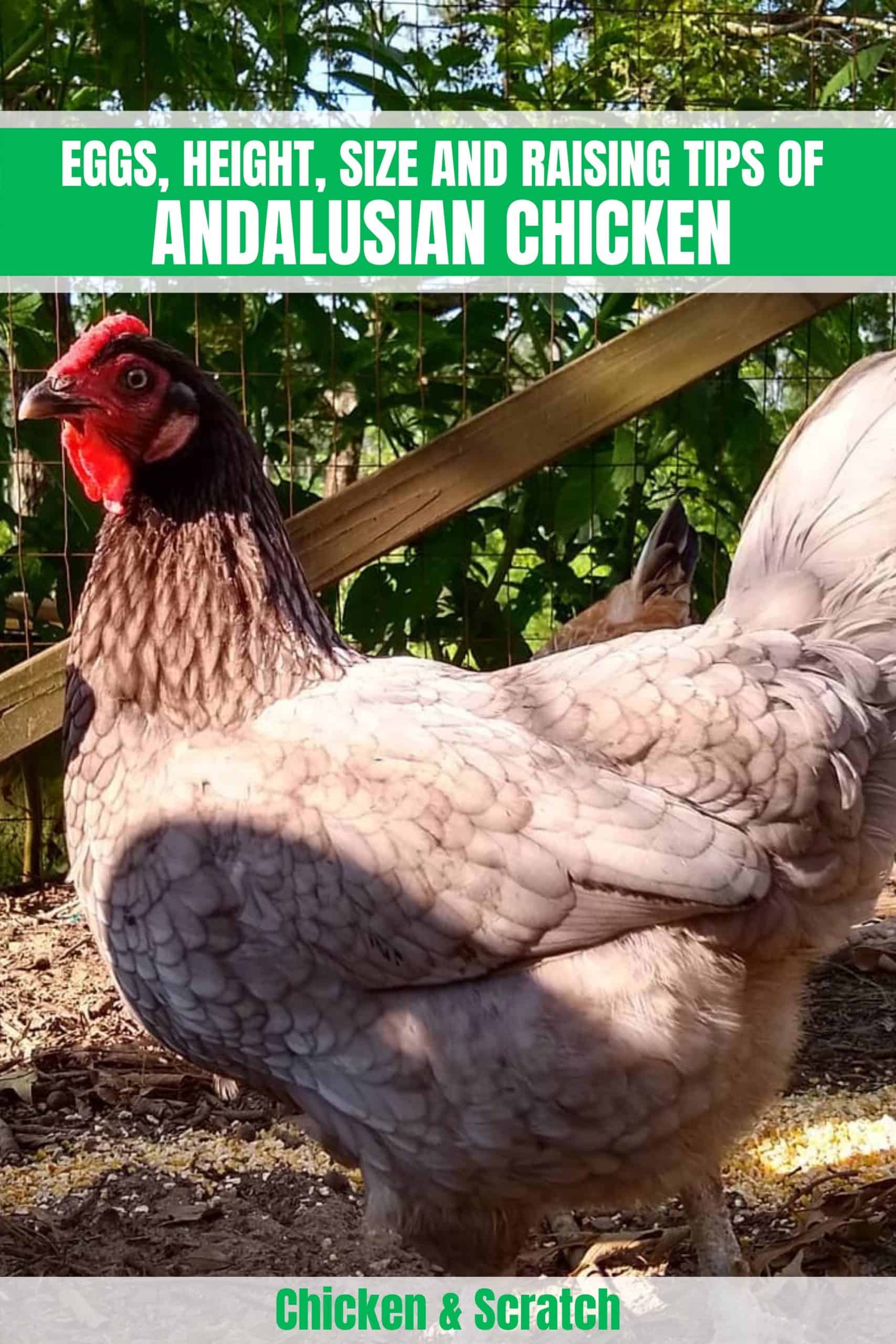The Andalusian chicken breed is one of the most interesting, both in terms of its history and its unique appearance. This breed is quite old, and it has remained a valued member of many chicken enthusiasts’ flocks over the years.
Although it is now much more difficult to find, the rare Andalusian chicken is still a wonderful addition when keepers are searching for a beautiful, productive bird.
Weight | 5.5 - 7 lbs |
Color | blue |
Lifespan | 5-8 years |
Egg Size | large |
Egg Color | white |
Egg Laying | normal |
Cold Hardy | Yes |
Cost per Chick | $3.75 -$6.61 |
This article will cover
- Andalusian Chicken Background and History
- Andalusian Chicken Breed Standard
- Personality and Temperament
- Andalusian Chicken Egg Laying
- Health Issues and Care
- 3 Tips for Raising Andalusian Chickens
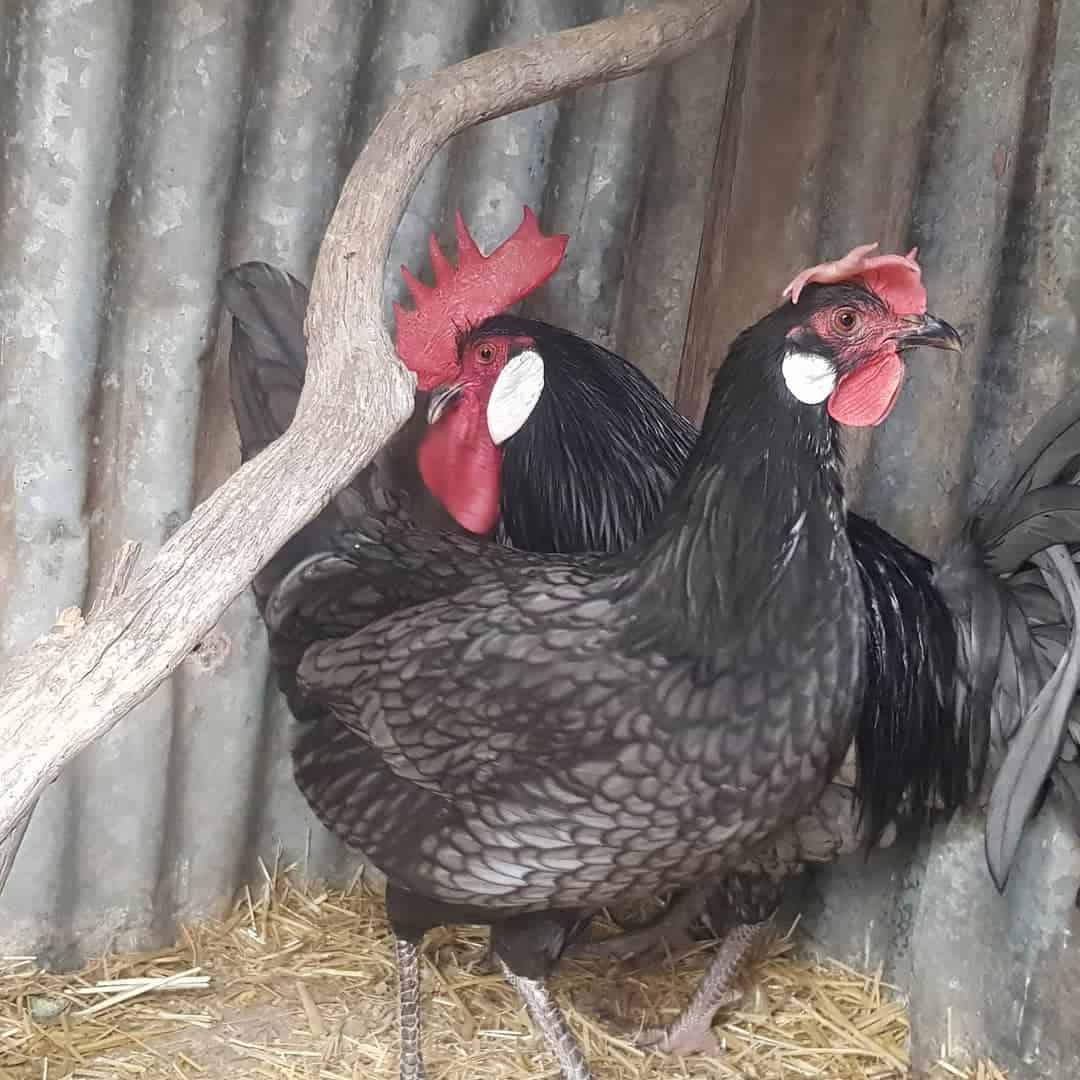
Andalusian Chicken Background and History
It is not clear exactly where or how the Andalusian chicken first originated. It is agreed that the chicken came from Spain. The Andalusian looks very much like another popular Spanish breed aptly named the Spanish chicken.
Many historians believe the Andalusian was probably created by breeding local chickens, such as the Spanish chicken, with Black Castilian chickens.
Andalusian chickens were first introduced to England somewhere between 1840 and 1850. There, two breeders named Taylor and Coles created what is known today as the international Andalusian strain.
One of the goals of these breeders was to enhance the attractive blue color of the birds. The countess of Dartmouth also found the breed appealing and began raising them and helping to develop the breed standard.
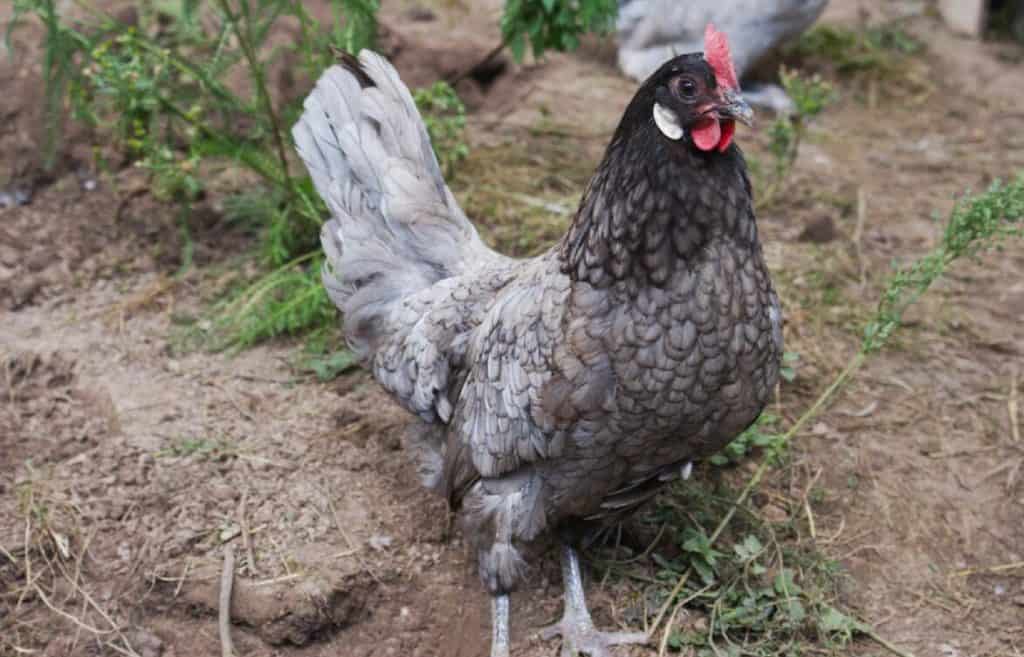
The Andalusian chicken was first shown publicly at the Baker Street show in London in 1853, although their coloring and appearance were somewhat different from the Andalusian chickens we know today.
Andalusian chickens reached the United States between 1850 and 1855, and breeders there began, much like their English counterparts, to breed the birds in order to improve their appearance. The breed was recognized by the American Poultry Association in 1874.
Today, Andalusian chickens are relatively uncommon in England and are even rarer in the United States. In Spain, however, there are about 10,000 chickens of this breed, mostly centered around Utrera, which is in southwest Spain.
A bantam, or smaller sized, chicken of the Andalusian line was created in the 1880s.
Andalusian Chicken Breed Standard

- Hens are five pounds, roosters are seven pounds
- The body shape is long and sleek
- Only blue colored Andalusians fit the breed standard
Andalusian chickens are striking to look at due to both their beautiful colors and the alert, attentive way they carry themselves. The chickens are of medium size, with hens weighing about five pounds and roosters weighing about seven pounds.
These chickens have a sleek, slim appearance. Their bodies are long and not overly muscular. This slender appearance is heightened by the birds’ feathers, which lie flat and close to the body.
The only acceptable Andalusian chicken color recognized by poultry associations in accordance with the breed’s standards is blue. Blue means that the chicken has dark gray feathers lined with black lacing.
In some chickens, this blue coloring may be lighter or darker, or the lacing may be washed out or difficult to see. The quality of the coloring will depend on how the bird was bred.
Interestingly, the blue color of the Andalusian chicken is caused by what is known as a dilution gene. This gene combines with the gene for black coloring and dilutes it. The birds with the best, most vivid blues are often produced when two blue Andalusians are bred together.
However, when two blue Andalusians are bred together, because of how the dilution gene functions, some of their offspring may be black or off-white with splashes of black instead of the accepted blue. It is only when splash-colored and black-colored birds are bred together that all of the offspring will be blue.
Personality and Temperament
Andalusian chickens are hardy and rugged and prefer to have space to roam about by themselves. They are also friendly and are considered to be an inquisitive breed. Keepers of these chickens will find that they often come close to see what people are doing.
However, Andalusians are not birds that like to be handled. They do not enjoy being petted or cuddled like some of the friendlier chicken breeds. In addition, they do not like being picked up, so caring for these birds can sometimes be a challenge.
For this reason, Andalusians are best left to intermediate or experienced chicken keepers. They are also not ideal for families that have children.
These chickens enjoy exploring and are curious about their surroundings. They will often range freely while exploring and, if their wings are not clipped, may fly over walls or fences.
Andalusian chickens can also be quite talkative or even noisy. They are often considered to be louder than the average chicken and, for this reason, may need to be kept only by people who do not mind the sound and do not have close neighbors.
Andalusian Chicken Egg Laying
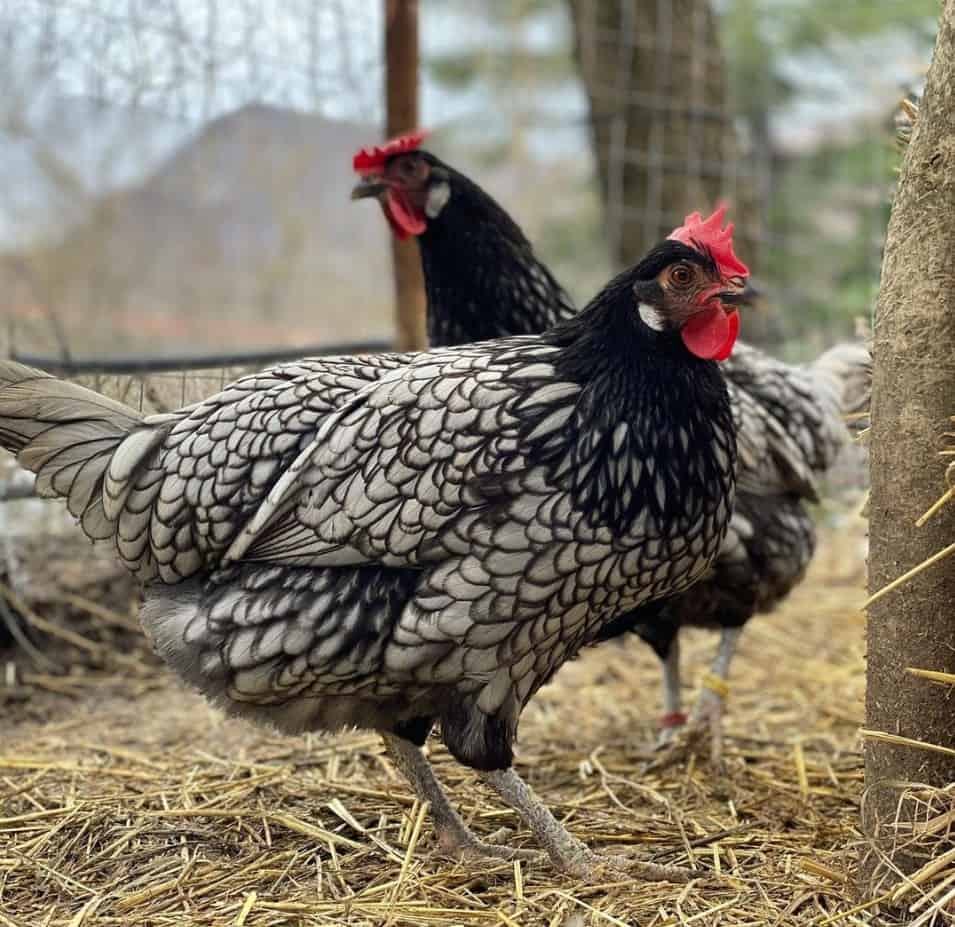
- Hens lay about three eggs each week
- Can produce 150 to 165 eggs each year
- Eggs are white in color
- Hens are not broody
Andalusian chickens are quite good when it comes to laying eggs. These birds produce about three eggs each week, for a total of between 150 and 165 eggs each year.
The eggs are medium or large in size and are white in color. Although all Andalusian birds produce eggs readily, white hens tend to produce larger eggs than other hens of the breed.
These chickens are also known to lay eggs throughout the year, including during the winter months.
Andalusian hens are not broody, which means they have little interest in sitting on a nest or incubating their eggs. This is a good trait for those keepers who are looking to use eggs for food, as broody hens can sometimes become aggressive when they are disturbed.
If Andalusian chicks are desired, however, the eggs will need to be placed under a broody hen of a different breed or in an incubator.
If eggs are incubated and hatch, the chicks of the Andalusian breed tend to mature much more quickly than the chicks of other breeds.
Health Issues and Care
Because they are so rugged, Andalusian chickens are not generally prone to more illnesses or particular diseases than any other chickens.
Keeping the habitat where the chickens are living clean and tidy can help to ensure that the birds do no contract the avian flu, which can be deadly. This can also help to cut down on internal parasites, mites, and ticks.
The combs of Andalusian roosters are quite large, which means that they can sometimes be prone to frostbite during the winter months. Coating the combs in petroleum jelly can help to reduce this risk.
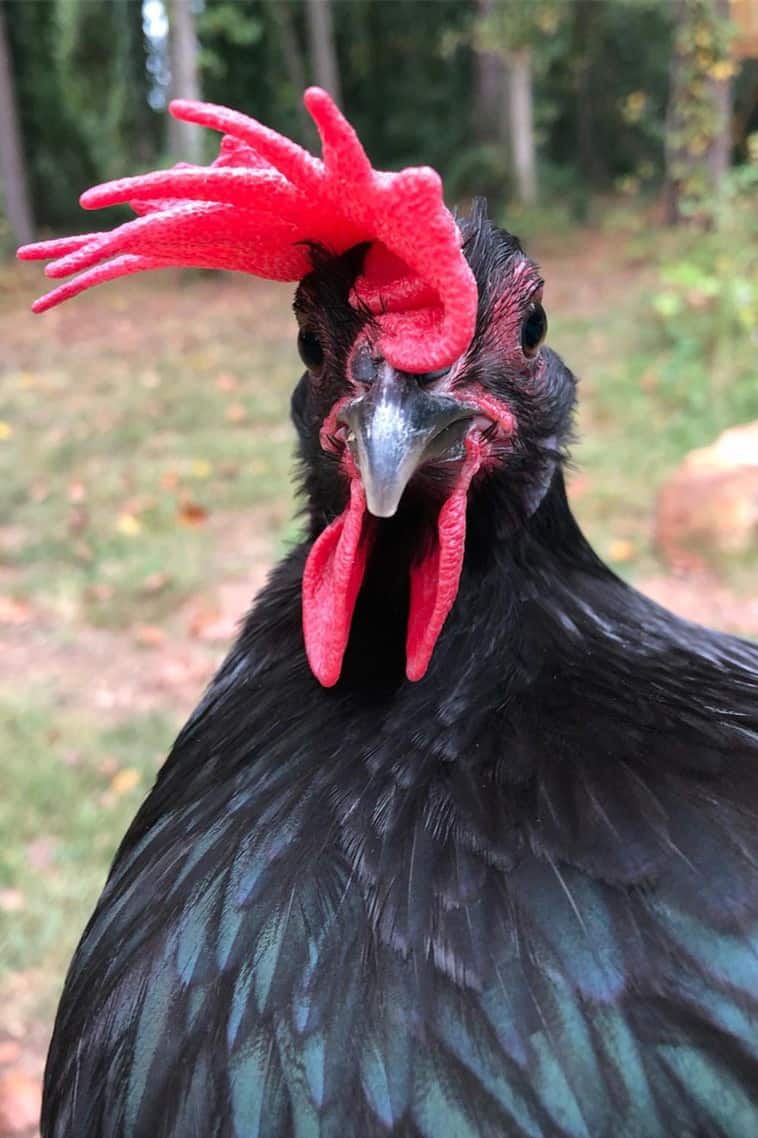
In addition, keeping the humidity level of the roosting area down can also help. When a roosting area is humid, moisture can build up on the comb and then freeze, which can lead to frostbite.
These chickens enjoy having a lot of space to roam around, which means that foot injuries may sometimes occur. One of the most common foot conditions is bumblefoot. This is when a chicken experiences trauma to the foot, and the injury is then infected by the Staphylococcus bacteria.
If a chicken is limping or there are signs of injury, using an antibiotic bath, such as a solution of Tricide Neo, can help to ward off bumblefoot.
If the bumblefoot is advanced and a black scab, or bumble, has formed, the only treatment may be to cut out the bumble, removing the abscess and using an antibiotic ointment to get rid of any traces of bacteria.
3 Tips for Raising Andalusian Chickens

- Best suited for warm weather
- Requires a large amount of space
- Leave wings unclipped for predator evasion
Andalusian chickens come from the Mediterranean and are therefore best suited to warmer climates. If they are kept in cold climates, these chickens should be offered ample hay or straw to bed into in order to stay warm.
Keepers should also watch for signs of frostbite. Conversely, while these chickens do well in warm weather, they require a good amount of cool, shaded space so as not to overheat.
These chickens are curious and love to explore and therefore do best as free-range birds. They are excellent at foraging and prefer to have a good deal of space to roam.
When confined, these chickens can often become stressed and may pull out their own feathers. Birds can also become much noisier when they are confined. They may become nervous or panicky, and this stress can be bad for their health.
Andalusian chickens are also relatively decent fliers. Although this can sometimes get them into trouble when it comes to flying over fences or walls, the flight also has its advantages.
These chickens will often fly up into trees in order to avoid ground predators such as foxes or coyotes, which can be quite helpful. They will also often roost in trees at night, which can also help to deter predators.

Summary
Andalusian chickens can sometimes be challenging to keep, as they do not enjoy being touched and require space to roam. However, for a chicken enthusiast who is looking for a beautiful, uniquely colored bird to add to their flock, the Andalusian is an excellent choice.
They are also good at laying eggs and make decent meat chickens, making them a bird to consider for any intermediate or advanced chicken keepers.
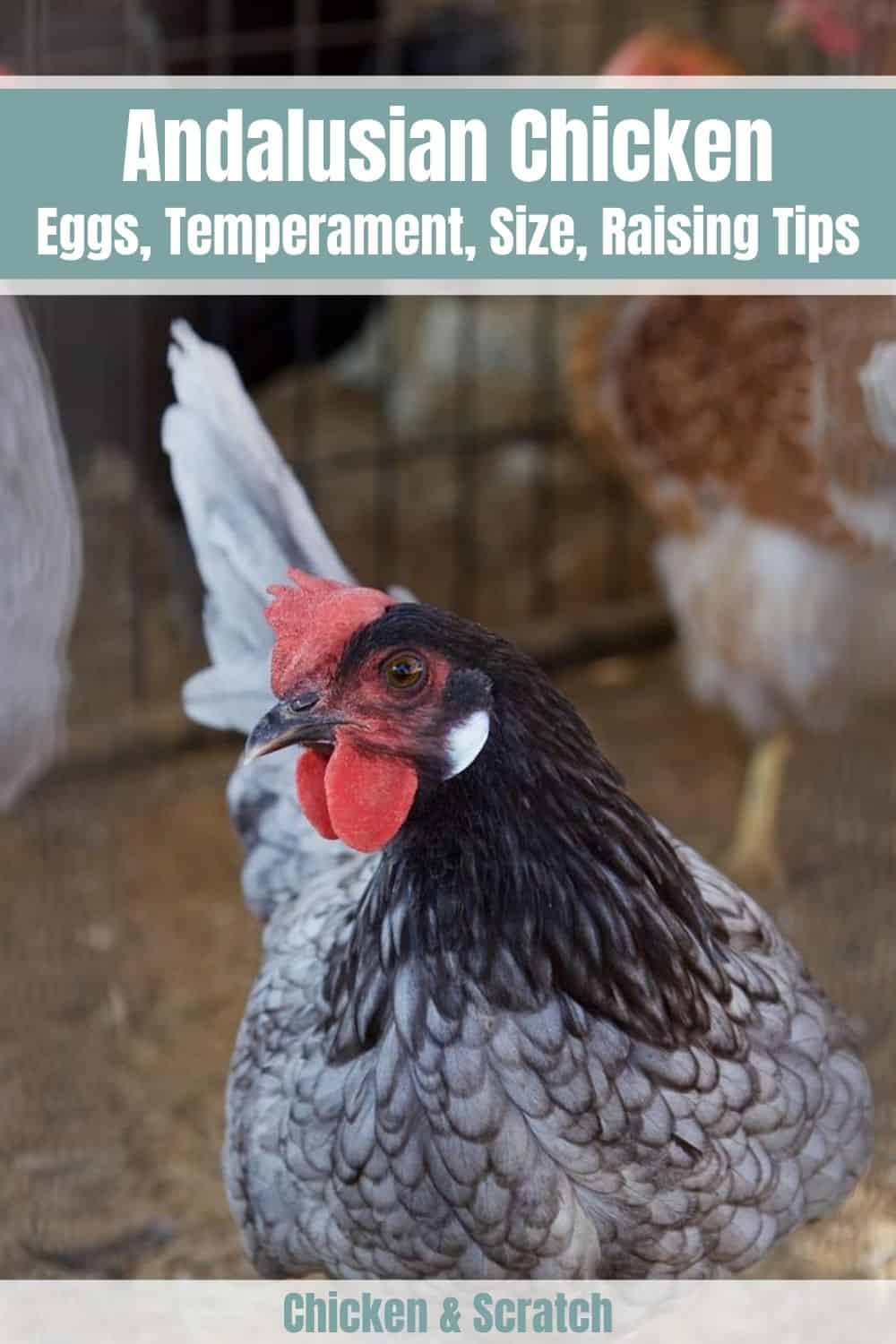

Joseph Hudson has been raising chickens for over 15 years. In 2018, he completed the Agriculture & Natural Resources program at Mt. San Antonio College. He currently raises over 1400 chickens on his 7.5-hectare farm. He keeps sharing his experience on raising healthy and happy chickens on Chicken Scratch The Foundry.
